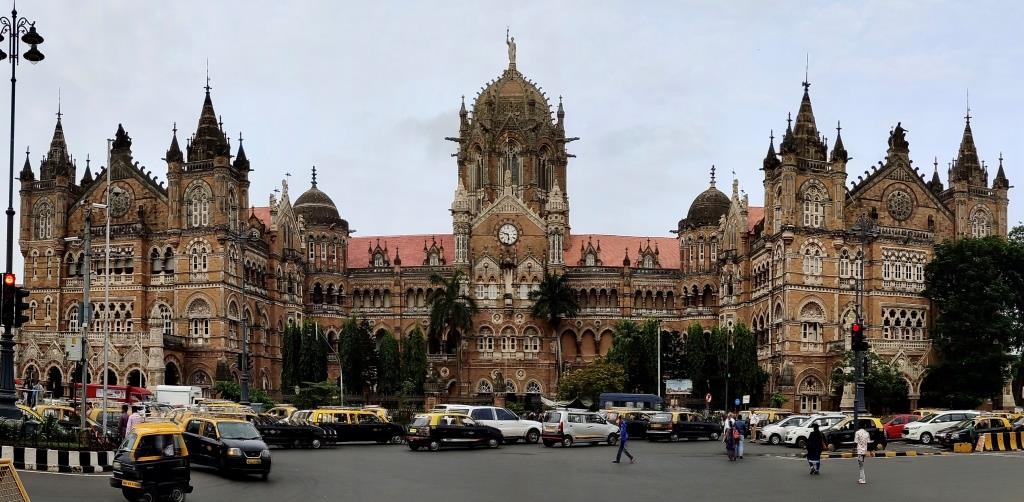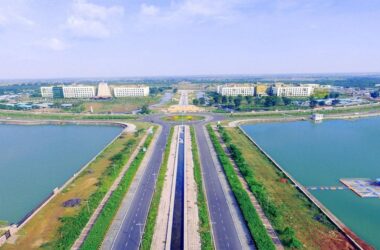The cave paintings are about 30,000 years old. Rock shelters that were home to humans centuries ago. And a rich flora and fauna around them, in fact, make Bhimbetka a gift to us from our early ancestors.
An archaeological treasure, has about 243 rock shelters. The pictures found in the rock shelters here are similar to those discovered in Australia’s Kakadu National Park; For cave paintings of Bushmen in the Kalahari Desert and Upper Palaeolithic Lascaux cave paintings in France.
A visit to these ancient natural carved rocks surrounded by the dense forests of Bhimbetka will bring you childlike wonder. About 47 minutes drive will also take you on a tour of Bhojpur. Visit the mysterious temple dedicated to Lord Shiva. Its sanctum has a shivalinga about 7.5 feet high. The construction of the temple is believed to have begun during the reign of Paramara Raja Bhoja.
Bhimbetka a UNESCO World Heritage Site
The caves spread over the vast expanse of Bhimbetka have paintings that reveal the secrets of some of our earliest ancestors. In fact, It has been a witness to a part of human development – very few heritage sites around the world that one can be proud of. There are paintings in 500 of the 760 caves. These paintings are completely diverse in nature as the caves have been in existence for centuries.
The oldest paintings have large figures, with only the outline of an animal or person, and scenes from daily life are noted. The newcomers have small but elaborate figures with religious motives, and the outline is filled with color and detail. Some of these paintings are said to be 15,000 years old. But new research indicates that there are paintings that are 30,000 years old!
This treasure, older than time, was unfortunately discovered too late. In 1957, to be specific, by Dr. Vishnu Wakankar. And he earned the honor of being a UNESCO World Heritage Site in 2003. Very late, but absolutely worthy.
The legend behind Bhimbetka’s name
Bhimbetka, the treasure of rock shelters, is believed to have been home to many for centuries. One of the residents influenced the name.
The names of the villages around Bhimbetka support this legend. One village is named Pandapur while Bhiapura is believed to be derived from Bhimpura. Legend says that the Lakhjuhar forest was once the wax (lakh) palace of the Pandavas.
Important Facts
- Legend says that Bhimbetka is derived from ‘Bhimbethka’ which means ‘Bhima’s seating place’, from the Mahabharata
- Out of 760 rock shelters, 500 are adorned with paintings.
- A painting of a huge red bison attacking a man is visible only when the sun is fine.
- Thousands of years old art gallery is hidden amidst the huge, dark boulders of Bhimbetka.
- Bhojpur, just 25 km from Bhimbetka, is a city where one of the largest Shivalingas in the country is housed in its beautiful Shiva temple.
Read about more heritage site
Frequently Asked Questions About Bhimbetka
Q. Who discovered Bhimbetka caves?
A – Spread over 10 km, there are about 750 rock shelters and seven hills in the region. These caves have now been declared a UNESCO World Heritage Site due to their historical importance. In 1957, archaeologist Dr. Vishnu Wakankar saw these structures from the window of the train on his way to Nagpur.
Q. Where is Bhimbetka?
A – Bhimbetka Rock Shelter, a series of natural rock shelters in the foothills of the Vindhya Range of central India. They are located in the state of Madhya Pradesh, west-central, about 28 miles (45 km) south of Bhopal.
Q. Which cave is called India’s oldest auditorium?
A – Researchers believe they have found the first fossil of Dickinsonia in India – Earth’s ‘oldest animal’, which is 570 million years old – called the ‘Auditorium Cave’ in Bhimbetka.
Q. What are the features of Bhimbetka rock shelters?
A – The site includes:
- 400 painted rock shelters in five clusters;
- Palaeolithic evidence from excavations within shelters indicating antiquity of human settlement;
- Stone and Iron Age walls and floors within the rock shelters;
- Evidence of a very long cultural continuity within many of the painted rock shelters;
Q. Why is Bhimbetka famous?
A – The rock shelter is an archaeological site in central India that spans the prehistoric Palaeolithic and Mesolithic period as well as the historical period. The Bhimbetka site contains the oldest known rock art in India, as well as being one of the largest prehistoric complexes.
Q. Why is Bhimbetka called Bhimbetka?
A – History of Bhimbetka Caves
Giant rocks and rocks were visible from far away, which were discovered by chance. The word Bhimbetka is derived from the word ‘Bhima Baitaka’, which is believed to have some mythological connection with Bhima, one of the five Pandavas of the Mahabharata.
Q. Which river is near Bhimbetka?
A – On the other side of the hill can be seen the huge alluvial plain of the Betwa River. The hills in and around Bhimbetka form an important watershed. To the north of Bhimbetka and its adjoining hills, drainage flows into the Betwa River. The drainage network in the south eventually merges into the Narmada River.
Q. What does Bhimbetka’s cave painting reveal?
A – The Rock Shelter is an archaeological site in central India that spans the prehistoric Palaeolithic and Mesolithic period as well as the historical period. 8,000 BCE), corresponding to the Indian Middle Stone Age. These cave paintings depict subjects such as animals, dancing and early evidence of hunting.
Q. Which Indian archaeologist first visited Bhimbetka caves?
A – S. Wakankar was the first archaeologist who visited some of the caves in sight and discovered its prehistoric importance. He observed that the rocks of the Bhimbetka caves resemble those caves he encountered in Spain and France.









